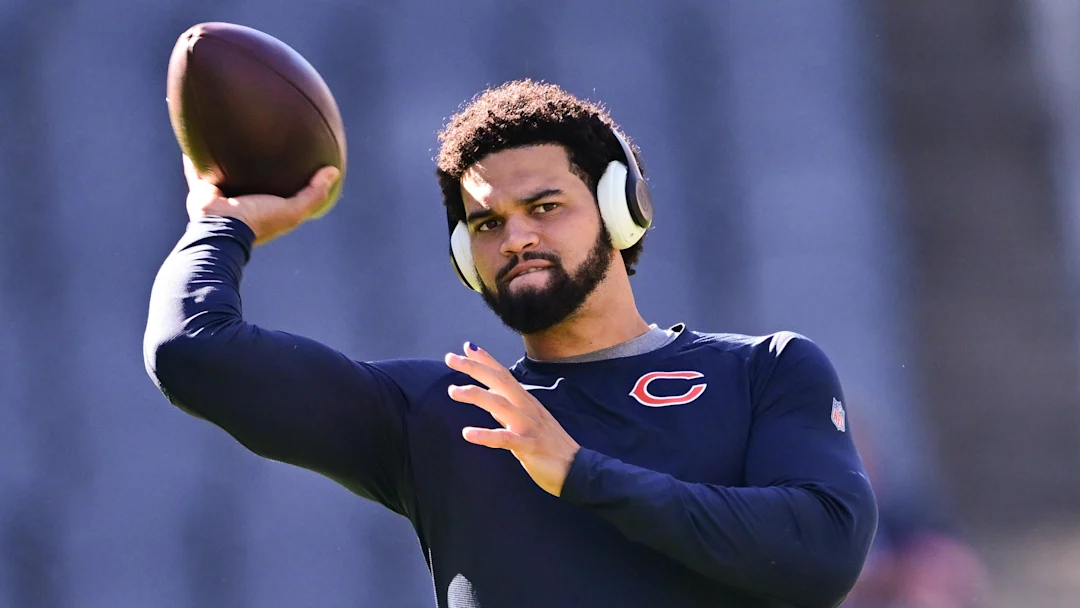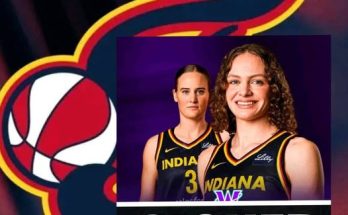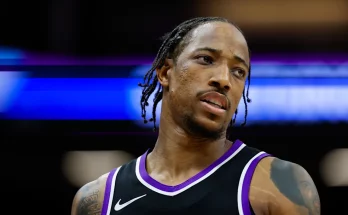In March 2023, the Chicago Bears made a franchise-altering decision that sent shockwaves through the NFL landscape. They traded the No. 1 overall pick in the NFL Draft to the quarterback-needy Carolina Panthers in exchange for a haul that included wide receiver D.J. Moore, multiple first-round picks, and additional draft capital. Carolina used that pick to select Alabama’s Bryce Young, who they believed would be the face of their franchise for the next decade. Meanwhile, the Bears showed confidence in then-quarterback Justin Fields and armed him with Moore, one of the league’s most reliable playmakers. Two years later, the ripple effects of that trade are still being felt. With Fields now gone, Caleb Williams in Chicago, and Young enduring a rocky start in Carolina, the question looms: who really won the Bears-Panthers QB gamble?
Bryce Young’s rookie season was difficult from the start. Playing behind a shaky offensive line and working with a lackluster receiving corps, the former Heisman Trophy winner struggled to find consistency or rhythm. Carolina’s offense ranked among the league’s worst, and Young’s confidence appeared to waver as the season wore on. Despite flashes of promise and the natural growing pains expected from a young quarterback, the Panthers’ inability to support their rookie with adequate protection and weapons stifled his development. Young finished the year with modest statistics, raising questions about whether Carolina made the right choice in both the quarterback and the trade itself.
Meanwhile, Chicago’s patience with Justin Fields wore thin. Though he remained a dynamic athlete capable of making highlight-reel plays, Fields’ growth as a passer plateaued. Despite the addition of Moore and occasional sparks of brilliance, the Bears’ offense struggled to consistently produce. By the end of the 2023 season, Chicago held the Panthers’ No. 1 overall pick from the trade—a reflection of Carolina’s dismal year—and faced a decision of its own: double down on Fields or start fresh with a new quarterback.
Enter Caleb Williams.
The 2022 Heisman winner out of USC had long been projected as a generational talent, drawing comparisons to Patrick Mahomes for his creativity, arm strength, and off-script magic. With the top pick secured thanks to Carolina’s collapse, the Bears chose to move on from Fields, trading him to the Steelers and officially hitching their future to Williams. The selection symbolized a new era in Chicago—a complete reset centered around a 22-year-old quarterback widely regarded as the best prospect since Andrew Luck or even Trevor Lawrence.
In doing so, Chicago executed one of the rarest feats in modern football: turning one No. 1 pick into a future star receiver, a cornerstone quarterback, and sustained draft flexibility. The initial trade with Carolina netted them Moore, who immediately became the Bears’ WR1, along with additional picks that would be used to build a young core. And when they flipped Fields, they recouped more value, clearing the path for Williams to begin his NFL journey unencumbered.
Williams steps into a dramatically improved situation compared to what Young inherited in Carolina. He has Moore, a 1,000-yard receiver; Keenan Allen, acquired from the Chargers; and Rome Odunze, whom the Bears selected ninth overall in the same draft they took Williams. That trio gives Chicago arguably the deepest wide receiver room in the league. Add in tight end Cole Kmet and running back D’Andre Swift, and the Bears suddenly have a skill-position group designed to help a young quarterback thrive. The offensive line, while still a work in progress, is better than what Carolina fielded in 2023, and offensive coordinator Shane Waldron brings a creative, QB-friendly system that should further support Williams’ development.
In Carolina, the outlook is more complicated. The Panthers fired head coach Frank Reich less than a year into his tenure and replaced him with Dave Canales, known for helping Baker Mayfield and Geno Smith revive their careers. The hope is that Canales can unlock Young’s potential in a way Reich couldn’t. Carolina also made moves to surround Young with more support—trading for Diontae Johnson, drafting wide receiver Xavier Legette, and improving the offensive line—but there’s still a long way to go before the Panthers resemble a playoff-caliber roster.
The contrast between the situations is stark. Williams enters a supportive, talent-rich environment designed to maximize his gifts from Day 1. Young, by comparison, had to weather the storm as the face of a rebuilding franchise without the tools to succeed. It’s a reminder of how crucial context is in quarterback development. Talent matters, but so do timing, coaching, weapons, and organizational stability.
Looking at the trade through that lens, the Bears emerge as early winners. They used Carolina’s desperation to orchestrate a long-term plan that has now placed them in arguably the best position they’ve been in since the 1980s. With a new quarterback, a revamped offense, and a defense full of young talent and veteran leadership, Chicago is no longer rebuilding—it’s reloading. The front office deserves credit for recognizing the moment, staying patient, and not settling on a quarterback simply because they drafted him in the first round. Their boldness allowed them to turn Bryce Young into Caleb Williams without technically ever drafting Young themselves.
Of course, the story isn’t finished. Bryce Young’s career is far from over, and there’s still a very real chance he becomes a Pro Bowl-caliber quarterback in the right system. The Panthers’ new coaching staff has preached patience and process, hoping Year 2 brings more poise, confidence, and production. If Young improves dramatically and leads Carolina to contention in the near future, the narrative may shift. But for now, the early returns paint a lopsided picture.
It’s also important to note that the Bears’ journey with Caleb Williams has yet to begin. For all the hype, he remains an unproven NFL player. The league is littered with can’t-miss prospects who failed to translate their college dominance to Sundays. But if the Bears’ infrastructure is any indication, Williams has a better chance than most to succeed. And if he becomes the franchise savior Chicago has been searching for, the 2023 trade will be remembered not just as a franchise-defining moment—but as a masterclass in team building.
In a league where quarterback decisions make or break franchises, the Bears chose vision, patience, and value over panic. The Panthers, seeking their next Cam Newton, acted boldly and aggressively but may have underestimated the cost of moving up without a foundation in place. There’s honor in going for it—but there’s wisdom in waiting for the right moment.
Ultimately, this is a story about timing, fit, and foresight. The Bears didn’t just trade the No. 1 pick—they traded up in the long run without ever moving. They played the board, bet on themselves, and positioned their franchise for success. The Panthers, meanwhile, may have mortgaged their future too soon and placed their hopes in a talented but under-supported rookie.
The final verdict will take years to write. But right now, with Caleb Williams under center, an elite group of pass catchers around him, and a buzz not felt in Chicago in decades, it’s hard to argue against the Bears. They didn’t just win the trade—they reset the franchise.



